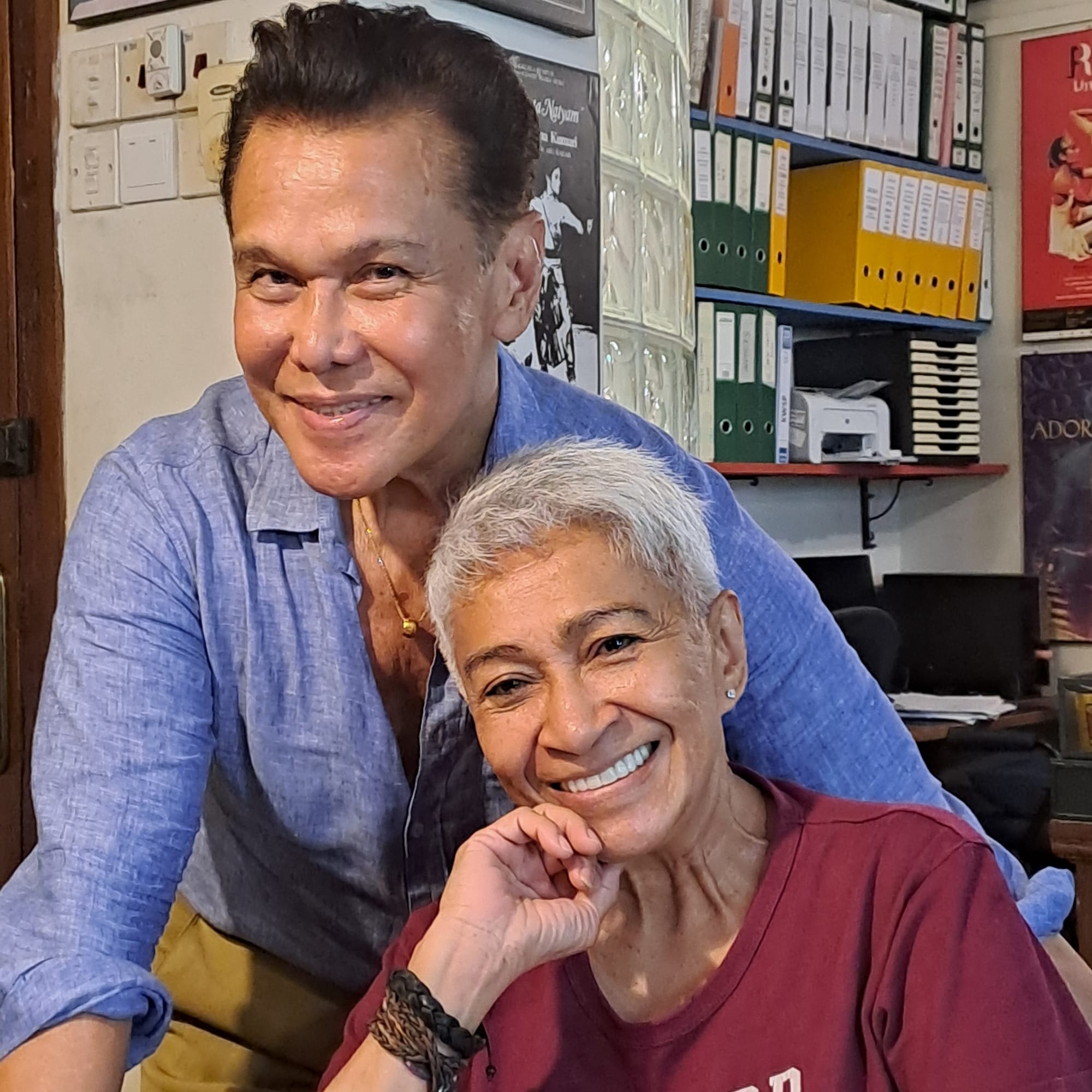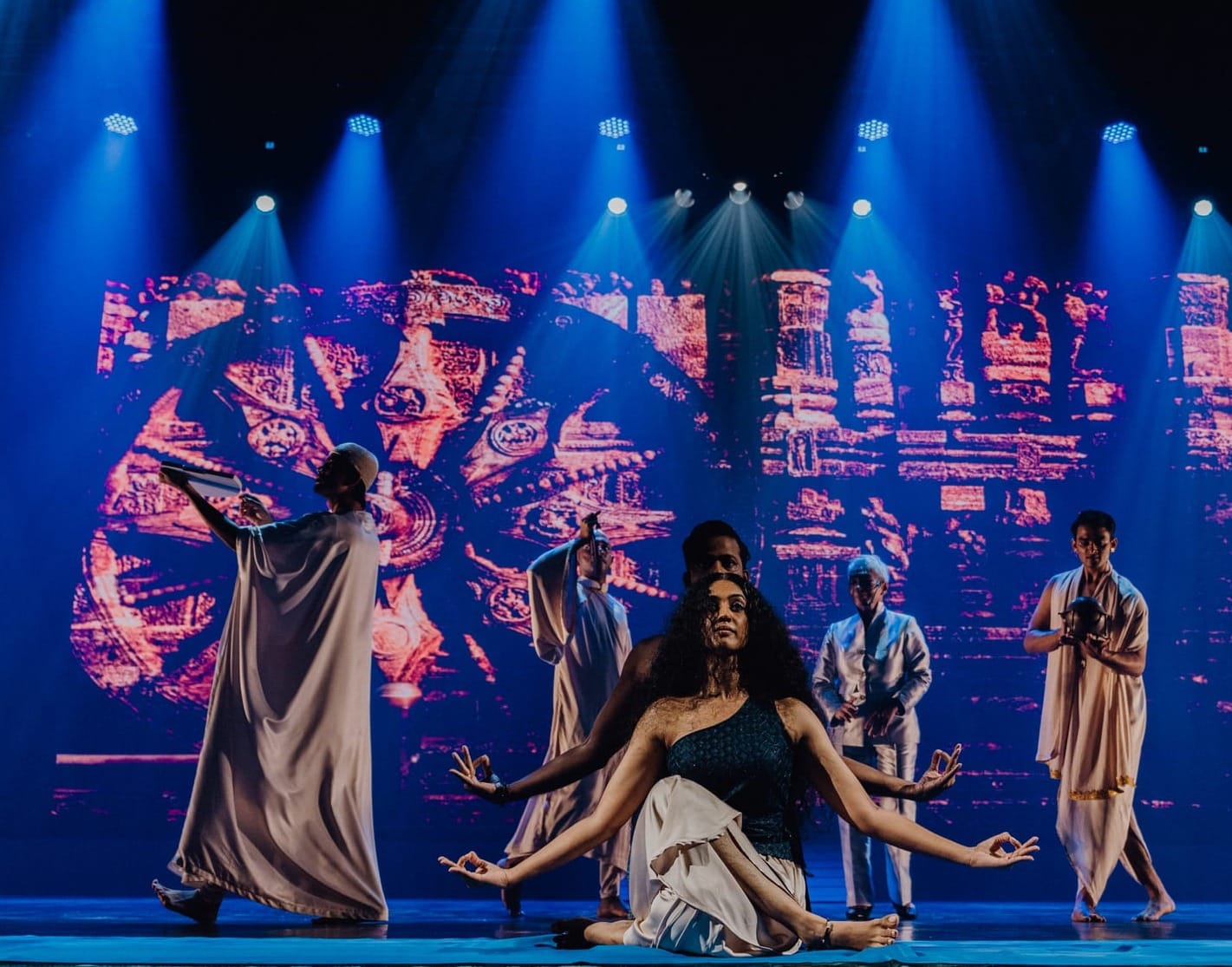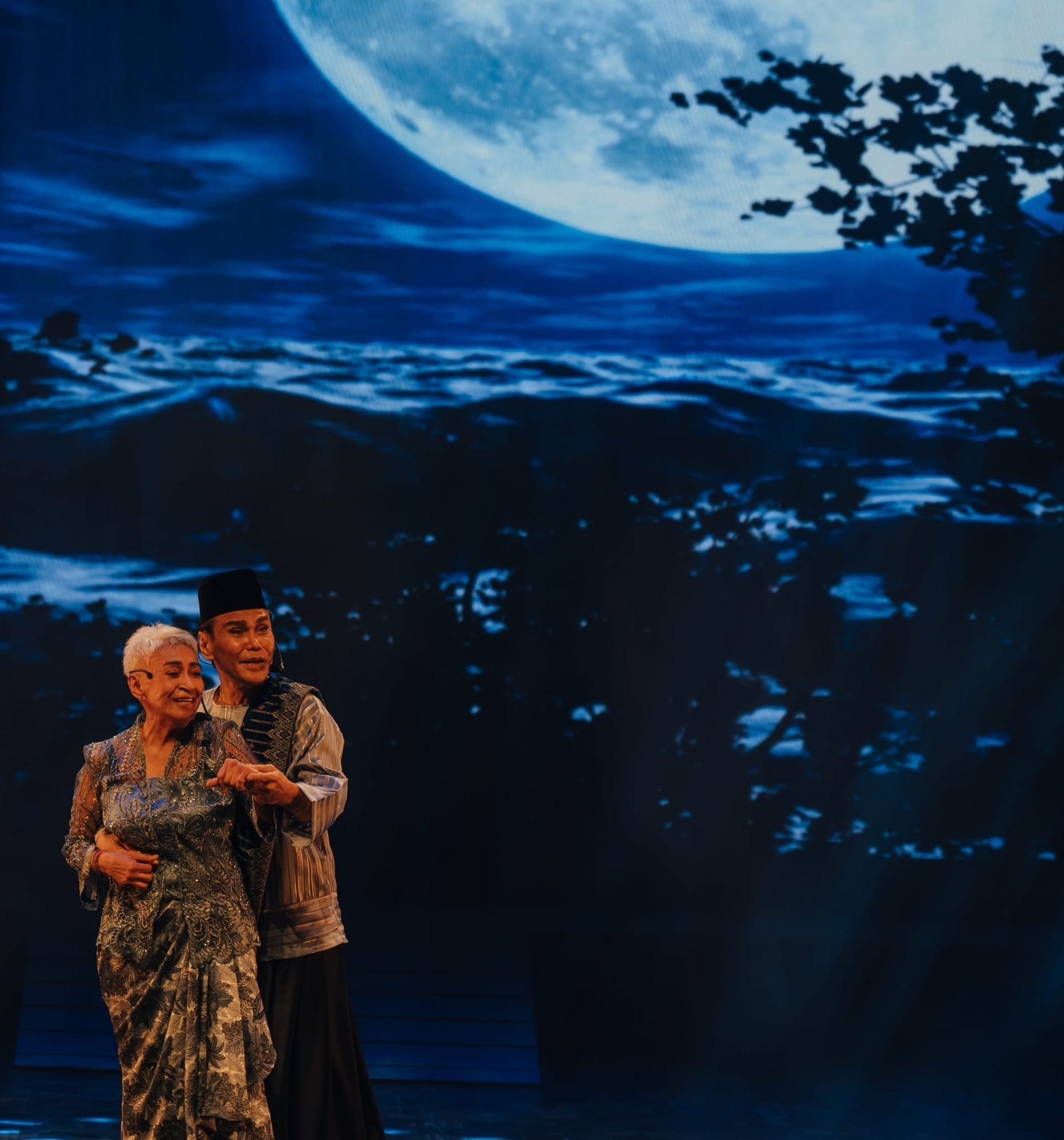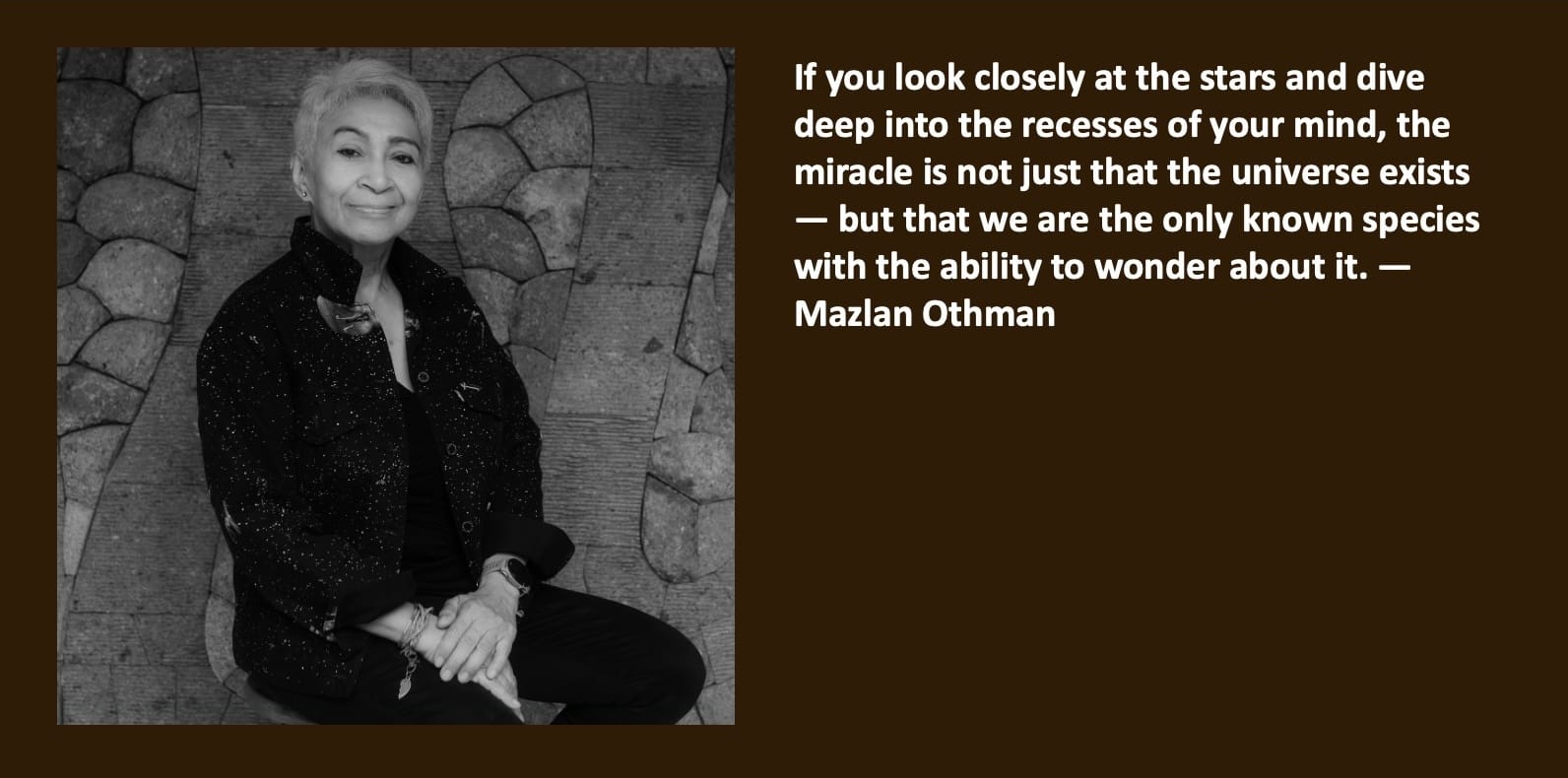- Astrophysicist Tan Sri Dr Mazlan Othman and dance maestro Datuk Ramli Ibrahim brought together science and classical performance in Meniti Cakerawala.
- The two visionaries believe in the convergence of science, art, and philosophy to explore deeper truths about existence.
- Meniti Cakerawala and the International Youth Space Academy aim to stimulate wonder and curiosity through STEAM education.
By Geetha K
ASTROPHYSICIST Tan Sri Dr Mazlan Othman and classical dance icon Padma Shri Datuk Ramli Ibrahim are two visionaries who defy the binaries of science and art, logic and faith. Their theatrical masterpiece Meniti Cakerawala – The Science and Romance of the Cosmos, brings together galaxies and physics with dance, music, and poetry.
For the Commonwealth of World Chinatowns (CWC), which champions diasporic heritage reimagined through new lenses, this collaboration shines as an example of how the cosmos can be a mirror for knowledge expansion and cultural expression.

The idea for Meniti Cakerawala was born from Cosmic Connections Langkawi, a book co-created by Mazlan who is Malaysia’s first astrophysicist and founding Director General of the National Space Agency. She also served as the Director of the United Nations Office for Outer Space Affairs (UNOOSA) and is currently the Director of the Tropical Science Foundation. The book explores Malaysia’s engagement with the stars, especially through the Langkawi National Observatory (LNO).
As founder of the Sutra Dance Theatre and Chairman of Sutra Foundation, as well as a revered guru in Bharatanatyam and Odissi, Ramli has reimagined classical dance as a powerful medium for intercultural dialogue. Deeply moved by the book’s themes and imagery, he recalls, “The cosmic narrative demanded a stage.”

“It was a defining moment,” Mazlan agrees. “We both realised we wanted to tell the same story, but while my ambition was modest, Ramli, being the consummate artist, had a sweeping canvas in mind.”
In the public sphere, the two may seem like opposites. She, the scientist; he, the performer. But beneath the surface, they share the unshakable conviction that art and science must converge to deepen our understanding of existence.
For Mazlan, Meniti Cakerawala is not a departure from science, but its natural extension. “Science is one of the most creative processes we have,” she says. “It’s not just equations or the quantum picture. It’s philosophy and imagination. We are made of inanimate atoms that somehow became conscious. That, to me, is the most poetic thing in existence.”

Ramli, the production’s Artistic Director, puts it simply: “Nature is science, it’s also art. It’s got to be a marriage, otherwise it won’t work.”
Their friendship is lively and layered. Ramli admits with a laugh, “Our banter can get acerbic… In a sense, we’re both crazy, and that ‘craziness’ gives me the freedom to explore and create works like Meniti Cakerawala. I use that freedom to transcend all forms of art and culture — Indian, Malay, Chinese, Western, or even aboriginal.”
Mazlan concurs: “I might annoy some of my fellow scientists by saying this, but science is about what’s going on in your head, and that’s what I wanted to bring out through this play. Scientists are philosophers at heart — and yes, a little crazy in the head.”

Meniti Cakerawala unfolds in four acts. It opens with the Langkawi National Observatory, invoking humanity’s ancient and ongoing longing to decode the sky. “This act captures that pivotal human impulse to look up and ask, ‘Who are we?’” says Mazlan. “We are made of stars… and being a species with the ability to think, we must breach all conditioning to ask: ‘What are we made of?’”
This is followed by the second act which explores the myths and science of creation, juxtaposing quantum entanglement with ancient cosmologies. The third act expands the lens to interpretations of the cosmos across civilisations and the final act returns to Earth, with a universal question: How does our cosmic origin shape our humanity? Here, the poetry of National Laureate Muhammad Haji Salleh meets the haunting compositions of Valerie Ross’ 12 original pieces, alongside the visual art of Jalaini Abu Hassan. It is a transcendent reflection on hope and human responsibility in the universe.
As Ramli reflects, “While Mazlan talks about particles and timelines, I respond by giving form to the formless — conveying black holes, cosmic inflation, and metaphysical questions through gesture and rhythm. The observatory becomes a metaphor for the human soul. We bring the universe to the stage.”

Both believe the production should serve as a launchpad for ideas, imagination, and youth engagement. “Wherever I’ve worked,” says Mazlan, “even when I was leading the space agency, I advocated for the arts and focused on human development. We must teach young people to think differently. Crazy people, after all, change the world.” Ramli agrees. “We are planning to tour across Malaysia with Meniti Cakerawala, with a focus on engaging youth. There are also plans to take it to India, and with the right support, to other parts of the world.” But support is hard-won. “People assume that, because of my reputation and connections, it’s easy for me. That couldn’t be further from the truth. The reality is, I often begin projects without any funding, trusting that somehow, support will come. I have absolute confidence in the quality and standard of my work — and that is the only collateral I have to offer.”
Mazlan and Ramli are both deeply rooted in nature and heritage. An avid trekker, Mazlan finds peace in the mountains and joy in simply gazing at the stars. Ramli, too, connects his creative energy to nature, especially in Sutra Foundation’s lush sanctuary in Kuala Lumpur, where even a growing beehive in the guest bathroom is carefully protected. For Ramli, tradition is not static. “Culture and tradition are dynamic living things, and it’s vital that we contribute to them positively and not destroy them. It’s very important to connect with the earth. If you don’t appreciate the past or value its core, you miss the point.”
International Youth Space Academy
Parallel to Meniti Cakerawala, another visionary project is being launched: the International Youth Space Academy (IYSA) initiated by Commonwealth of World Chinatowns, set to open in Penang. Aimed at inspiring Malaysian youth to pursue space sciences, the school integrates STEM and STEAM learning with creativity, storytelling, and wonder. At LIMA 2025 from May 20 to 24, a memorandum of understanding will be signed between IYSA and the Nonee Ashirin Foundation (NAF), as part of a broader effort to promote space sciences and media programmes designed to keep young minds engaged with the cosmos.
As the Commonwealth of World Chinatowns continues to nurture cultural identities through innovative expressions, Meniti Cakerawala is a shining example of how the universe can serve as both inspiration and destination. Mazlan puts it best: “If you look closely at the stars and dive deep into the recesses of your mind, the miracle is not just that the universe exists — but that we are the only known species with the ability to wonder about it.” Through science and art, reason and rhythm, Meniti Cakerawala asks us to do exactly that.





